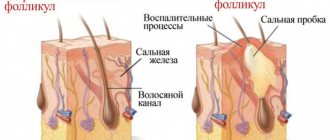Recently, Belarusian doctors advocated for mandatory vaccination against the human papillomavirus to appear in the national calendar. This news sparked discussion: perhaps the most common comment was that the HPV vaccine causes infertility and is essentially useless. Some wondered how cancer could be prevented by vaccination if cancer was not a virus.
To debunk some stereotypes, we talked with an obstetrician-gynecologist.
Elena Rudskaya
obstetrician-gynecologist, academic degree candidate, expert of the MAMA PRO project, author of the blog @doctor_rudskaya
How is the human papillomavirus and cervical cancer related?
— You need to understand that there are many types of human papillomavirus. 16 and 18 are high-risk types that cause cervical dysplasia and cancer.
HPV is a virus, it is transmitted through contact with mucous membranes through vaginal, oral and anal contact. Considering that modern people change sexual partners quite often, sometimes neglecting protective measures, the virus can be transmitted from one partner to another. Infection with HPV can occur an infinite number of times; lifelong immunity is not developed.
The virus integrates into the cell genome and destroys a protein - the so-called “controller protein”, p53, which is responsible for the process of apoptosis - controlled cell death. After this, the cell begins to multiply uncontrollably, which leads to a malignant disease.
The direct connection between HPV and cervical cancer is a generally accepted fact, confirmed by numerous studies. Thus, the German physician Harald zur Hausen received the Nobel Prize in Physiology or Medicine in 2008 “for the discovery of human papillomaviruses that cause cervical cancer.”
It has been scientifically proven that HPV causes cervical cancer in 98% of cases. Most likely, in the remaining 2% they simply could not detect viral DNA in the biomaterial.
Routes of transmission of papillomavirus
The main route of HPV infection is through sexual contact: infection occurs through vaginal, anal or oral sex with an infected person. It is most often spread during vaginal or anal sex. HPV can be transmitted even when the infected person has no signs or symptoms. Symptoms can take years to appear after you are infected, making the HPV virus the most dangerous.
Other routes of infection:
- the everyday route is not excluded;
- at birth, when the baby passes through the mother's birth canal;
HPV spreads easily through direct skin-to-skin and mucous membrane contact.
After infection, the virus remains in the skin and mucous membranes. It does not enter the blood or other organs.
HPV multiplies in the deep layers of the dermis, inside cells. Cells affected by the virus, as they mature, move to the upper layers of the skin, reaching the upper layers of the skin, HPV comes to the surface. Only viruses that reach the surface of the skin are infectious.
A feature of HPV infection is that it can remain in a latent (dormant) state for an indefinite period of time. In this condition, both infection of other people and detection of HPV by laboratory methods are unlikely.
How does the vaccine work?
“We must understand that the vaccine does not contain the virus itself, only its shell. But the body perceives it as a foreign agent and develops immunity to this virus.
However, the vaccine does not cure. If a woman is already infected with a certain type of HPV, it means that the p53 protein has already been destroyed, and if she is re-infected, the cells will still change. But you can get a vaccine against other types of HPV.
For example, a woman is infected with type 16 virus. She must regularly undergo screening control, but no one forbids her to get a vaccine against types 6, 11, 16 and 18. She will gain immunity to all types except type 16.
Does it make sense to get vaccinated after becoming sexually active, and should men get it?
— The vaccine is now being given to both girls and boys. But we must understand that in men the self-elimination of the virus - its disappearance - occurs faster than in women.
According to global vaccination principles, both girls and boys are now vaccinated from 11 to 12 years old, in some countries - from 9. As a rule, two doses are administered. The ACIP Committee on Immunization recommends three doses.
Why is it better to vaccinate before sexual activity? Because in this case, the girl does not have HPV infection, which means the vaccine will have the maximum effect.
In the CIS countries, vaccination is carried out from 13 to 26 years for women and from 13 to 21 years for men. If you have already had sexual intercourse, but the woman is under 26 years old, then the vaccine is optional. If you are over 26 years old, then, according to the world community, there is no longer a great need for vaccination, since it is assumed that the woman has had too many sexual contacts.
But even after vaccination, women must undergo screening - a Pap test - on a general basis.
In Belarus, the vaccines used are Cervarix against HPV types 16 and 18 and Gardasil against HPV 6, 11, 16, 18. The most modern vaccine is Gardasil 9, which contains shells of nine types of HPV viruses 6, 11, 16, 18, 31, 22, 45, 52, 58. It was only licensed in the US in 2014.
Is it true that the HPV vaccine causes infertility?
— You need to understand that a vaccine is not a vitamin. It may have side effects, which are most often associated with intolerance to additional components in the drug - the same as in the case of antibiotics and certain foods.
But the assertion that the vaccine affects the reproductive system - oocytes, follicles, endometrium - clearly has no basis. A vaccine is not a virus, it is its shell. Immune cells are aimed specifically at fighting these membranes, and not the cells of the reproductive system, so talking about a connection with infertility here, let’s say, is reckless.
The benefits of vaccination are clear and undeniable. There is a film called Someone You Love: The HPV Epidemic that tells the stories of young girls who are diagnosed with cervical cancer. They all regret that they did not get vaccinated on time and did not undergo annual check-ups with a gynecologist.
When we are young, we do not attach much importance to our health. We live, fall in love, get married, build a career, and suddenly discover a disease. It’s good if a woman goes to an appointment every year and has a smear for oncocytology. Until recently, protocols required this to be done once a year. Now, in accordance with the global trend, a smear is taken for preventive purposes once every three years, if the doctor does not see any structural changes in the cervix. Therefore, a woman will have to take care of her health herself and keep this issue under control.
I am an advocate for the HPV vaccine. I am overwhelmed with sadness and despair when a 27-year-old patient comes to see me about planning a pregnancy, and she has already had her cervix removed because a precancerous condition has developed due to the HPV virus. And if she had been more vigilant and attentive to herself and her health, then this story could have been avoided.
Can't you get pregnant with HPV?
— It has been proven that there is currently no specific cure for HPV. All drugs - immunomodulators, antiviral drugs - are substances with unproven effectiveness. That is, they do not bring 100% benefit and, for the most part, are used only in the countries of the post-Soviet space.
Ideally, when planning a pregnancy, you need to come without carrying the virus and with a healthy cervix, without structural changes on it. But if HPV has been with you for a long time, and the desire to become a mother is very strong, then it is important not only to determine whether you are a carrier of the human papilloma virus, but also to determine the viral load of each type of virus. If the amount of HPV virus is less than 3x10*5 copies of DNA in 1 ml of sample, then you are simply a carrier, the virus does not multiply and does not cause harm. If the amount of virus is closer to 5x10*5 copies, then reproduction is moderate and the body copes. If there are more than 5x10*5 copies of HPV DNA - the virus is in an aggressive state, there is a risk of developing precancerous diseases of the cervix.
It is undesirable to become pregnant with numbers from 3x10*5 and above; the viral load should be reduced. The fact is that during pregnancy our immunity decreases, against which the virus can begin to progress. But it is so important that these cherished 9 months pass calmly and without threats to both the baby and the mother.
World statistics say that HPV causes severe dysplasia - a precancerous condition - within 15 years. But this is ideal. We all experience stress at work, hormonal imbalances, difficulties with nutrition, infections, emotional moments, and this period from 15 years old can be reduced to several months.
To find out if you have the virus, you should do a PCR test. Viral load is determined using quantitative HPV PCR and Digene test. To find out what condition the cervix is in, you need to do a PAP test (oncocytology smear). But I recommend liquid cytology, as it is a more sensitive and accurate test: its reliability is close to 99% compared to the conventional method.
How to distinguish papilloma from condyloma
You can distinguish papilloma from condyloma not only using PCR, but also visually.
They have a number of visible differences:
- Papillomas have a uniform structure, while condylomas have the appearance of a small papillary formation.
- Papillomas may be slightly hyperemic, while condylomas may have a slightly pinkish tint, similar to the color of the skin or mucous membranes.
- HPV can be transmitted through household contact, although sexual transmission is also possible; condylomas can only be transmitted through unprotected sexual intercourse.
- Condylomas can become inflamed. Whereas papillomas can hurt, turn red, and increase in size, even if there is a traumatic effect on them.
- The shape of papillomas is often round or oval, located separately from each other, while condylomas, on the contrary, have fuzzy shapes and can be located in clusters that fit tightly to each other.
- PCR analysis reveals their relationship to different types of virus strains.
- Condylomas, unlike papillomas, can form at the base and head of the penis, and when putting on a condom this can cause a lot of inconvenience.
It is important to know these differences between papillomas and condylomas.
With such growths on the genitals and their mucous membranes, they must be removed surgically.
When having sex with a patient who has condylomas, you need to follow several rules:
- In the best case, if a person has condylomas, one should refrain from sexual intercourse; in the worst case, if there is a traumatic effect, during violent sex, there is a high probability of injuring the condylomas, which can cause bleeding. This is dangerous and can affect human health.
- Protection with a condom does not provide a 100% guarantee that you will not become infected with HPV, since a condom is not able to completely protect a person’s genitals.
Do you have to vaccinate your children?
“You need to understand that a child may have secrets, a secret love, he may remain silent about something, and you, as a parent, will not have the opportunity to bring your child to a doctor’s appointment on time. While working in the emergency room, I often saw mothers who did not know that their children were already sexually active. And how many young women, 25-30 years old, with cervical dysplasia, who became infected with HPV in adolescence and were not seen by a gynecologist for a long time. As mothers, we cannot control our daughters and sons, but we can take care of their well-being and safety in advance.
Text : Tamara Kolos
Cover : Max Ostrozhinskiy on Unsplash
High-risk HPV: no symptoms
Unfortunately, most people who have the high-oncogenic risk type of HPV do not show symptoms or signs until it has already caused serious health problems. This is why regular checkups are so important. In many cases, examination can identify atypical cells at an early stage.
Penile cancer - may present with symptoms such as changes in the color or thickness of the skin of the penis, or the development of a painful ulcer on the penis.
Anal cancer may cause anal bleeding, pain, itching or discharge, or changes in bowel habits.
Vulvar cancer - may present with symptoms such as changes in skin color/thickness in the vulvar area. There may be chronic pain and itching.
Throat cancer can cause a sore throat, ear pain that doesn't go away, a persistent cough, pain or trouble swallowing or breathing, and weight loss.











